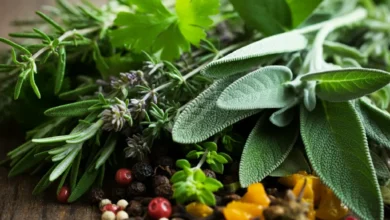Kidney Cleanse: Natural Ways to Boost Kidney Health

I. Introduction
Did you know your kidneys filter about 120-150 quarts of blood each day? These small but mighty organs are vital for your health. They clean your blood, balance fluids, and remove waste. Many people are curious about kidney cleansing. It’s a hot topic in wellness circles. This article will explore natural ways to support your kidney health. We’ll look at simple steps you can take every day. By the end, you’ll have a toolkit for better kidney care.
II. Understanding Kidney Health
A. Basic kidney anatomy and function
Your kidneys are bean-shaped organs located in your lower back. Each is about the size of a fist. They work non-stop to keep your body in balance. Here’s what they do:
- Filter waste from your blood
- Control blood pressure
- Make hormones for red blood cells
- Keep your bones strong
- Balance important minerals
B. Common kidney issues
Kidney problems can sneak up on you. Here are some common kidney issues to watch out for:
- Kidney stones: Hard deposits that form in the kidneys
- Urinary tract infections: Bacterial infections in any part of the urinary system
- Chronic kidney disease: Gradual loss of kidney function over time
- Acute kidney injury: Sudden decrease in kidney function
C. Signs of poor kidney health
Your body often gives warning signs when kidneys aren’t working well. Look out for these symptoms:
- Changes in urination: More or less frequent, or changes in color
- Swelling: In feet, ankles, legs, hands, or face
- Fatigue: Feeling tired more often than usual
- Skin rash: Dry, itchy skin
- Metallic taste: In your mouth or bad breath
- Nausea and vomiting: Especially in the morning
- Shortness of breath: After very little effort
III. The Concept of Kidney Cleansing
A. What is a kidney cleanse?
A kidney cleanse is a set of dietary and lifestyle changes. The goal is to support your kidneys’ natural cleaning process. It’s not about harsh detoxes. Instead, it focuses on gentle, natural methods to help your kidneys work better.
Some potential benefits of kidney cleansing include:
- Improved kidney function
- Better overall health
- More energy
- Clearer skin
- Reduced bloating
B. Scientific perspective on kidney cleansing
The medical community has mixed views on kidney cleansing. Here’s what you should know:
- Healthy kidneys clean themselves effectively
- No scientific proof shows specific cleanses improve kidney function
- Some cleansing methods may be harmful if done incorrectly
- A balanced diet and healthy lifestyle are key for kidney health
A study in the Journal of Renal Nutrition found that certain foods may support kidney health. These include fruits, vegetables, and whole grains. However, more research is needed to confirm these findings.
IV. Natural Strategies for Supporting Kidney Health
A. Hydration
Water is your kidneys’ best friend. Staying hydrated helps your kidneys flush out toxins. Here’s why it’s crucial:
- Helps remove waste through urine
- Keeps blood vessels open for good blood flow to kidneys
- Prevents kidney stones and urinary tract infections
How much water should you drink? Here’s a simple guide:
| Gender | Daily Water Intake |
|---|---|
| Men | About 15.5 cups (3.7 liters) |
| Women | About 11.5 cups (2.7 liters) |
Remember, these amounts include water from all sources, including food.
B. Diet modifications
1. Foods to include
A kidney-friendly diet can make a big difference. Here are some foods to add to your plate:
- Berries: Rich in antioxidants that fight inflammation
- Leafy greens: Packed with vitamins and minerals
- Fish: High in omega-3 fatty acids for heart and kidney health
- Whole grains: Provide fiber and help regulate blood sugar
- Olive oil: Contains healthy fats and antioxidants
2. Foods to limit or avoid
Some foods can put extra stress on your kidneys. Try to cut back on:
- Salt: Too much sodium can raise blood pressure
- Processed foods: Often high in sodium and unhealthy fats
- Sugary drinks: Can lead to weight gain and diabetes
- Alcohol: Strains the liver and kidneys
- Red meat: High in protein which can be hard on kidneys
C. Herbal supplements
Some herbs may support kidney health. Always talk to your doctor before trying supplements. Here are a few to consider:
- Dandelion root: May act as a diuretic to flush out toxins
- Marshmallow root: Could soothe the urinary tract
- Ginger: Might reduce inflammation and support kidney function
- Turmeric: Has anti-inflammatory properties that may benefit kidneys
D. Lifestyle changes
1. Exercise
Regular physical activity is great for your kidneys. It can:
- Help control blood pressure and blood sugar
- Maintain a healthy weight
- Reduce the risk of chronic kidney disease
Aim for 30 minutes of moderate exercise most days of the week. Try:
- Brisk walking
- Swimming
- Cycling
- Yoga
2. Stress management
Chronic stress can harm your kidneys. It may raise blood pressure and blood sugar levels. Try these stress-busting techniques:
- Deep breathing exercises
- Meditation or mindfulness
- Regular sleep schedule
- Hobbies you enjoy
- Spending time in nature
V. Sample Kidney-Cleansing Plan
Here’s a simple 3-day plan to support your kidney health. Remember, this is just a guide. Always consult your doctor before making big changes to your diet or lifestyle.
| Time | Day 1 | Day 2 | Day 3 |
|---|---|---|---|
| Morning | – 1 glass warm water with lemon – Whole grain toast with avocado – 10-minute walk | – Green smoothie (spinach, banana, berries) – 15-minute yoga session | – Oatmeal with berries and nuts – 20-minute light jog |
| Midday | – Large salad with olive oil dressing – Herbal tea | – Grilled fish with steamed vegetables – 1 apple | – Vegetable soup – Whole grain crackers |
| Evening | – Baked chicken with roasted vegetables – 5-minute meditation | – Lentil curry with brown rice – 10-minute deep breathing exercise | – Stir-fried tofu and vegetables – 15-minute relaxation yoga |
| Throughout the day | Drink 8-10 glasses of water | Drink 8-10 glasses of water | Drink 8-10 glasses of water |
This plan focuses on hydration, whole foods, and gentle exercise. It’s designed to support your kidneys without being too extreme.
VI. Precautions and Considerations
A. When to consult a doctor
While natural strategies can support kidney health, some situations need medical attention. See your doctor if you experience:
- Persistent pain in your lower back or sides
- Blood in your urine
- Frequent urinary tract infections
- Foamy or bubbly urine
- Swelling in your hands, feet, or face
- Extreme fatigue or weakness
- High blood pressure that’s hard to control
These symptoms could signal serious kidney issues. Early detection is key for effective treatment.
B. Potential risks of extreme cleansing methods
Be cautious about extreme “detox” or cleansing methods. They can do more harm than good. Here’s why balance is important:
- Drastic changes in diet can upset your body’s natural balance
- Some herbs or supplements may interact with medications
- Excessive fluid intake can overwork your kidneys
- Severe calorie restriction can lead to nutrient deficiencies
Gentle, sustainable changes are usually safer and more effective. Focus on long-term healthy habits rather than quick fixes.
VII. Conclusion
Caring for your kidneys is a vital part of overall health. Let’s recap the key points we’ve covered:
- Your kidneys are essential for filtering waste and balancing fluids.
- Natural kidney support focuses on diet, hydration, and lifestyle.
- A kidney-friendly diet includes fruits, vegetables, and whole grains.
- Staying hydrated is crucial for kidney health.
- Regular exercise and stress management support kidney function.
- Gentle, sustainable changes are better than extreme cleanses.
Remember, there’s no one-size-fits-all approach to kidney health. What works best for you may depend on your individual health status, diet, and lifestyle. The most important step is to make kidney health a priority in your daily life.
Start with small changes. Drink an extra glass of water each day. Add more vegetables to your meals. Take a short walk after dinner. These simple steps can add up to big benefits for your kidneys and overall health.
Your kidneys work hard for you every day. By adopting these natural strategies, you’re giving them the support they need to keep you healthy. Here’s to your kidney health and a vibrant, energetic life!
VIII. Additional Resources
For more information on kidney health, check out these reputable sources:
- Offers comprehensive information on kidney health and disease prevention.
American Association of Kidney Patients
- Provides education and advocacy for kidney patients.
- Offers medical insights and advice on maintaining kidney health.
- Provides global awareness and education about kidney health.
NIH – National Institute of Diabetes and Digestive and Kidney Diseases
- Offers research-based information on kidney function and disease.
These resources can provide more in-depth information and support as you continue your journey to better kidney health. Remember, while online resources are helpful, they don’t replace professional medical advice. Always consult with your healthcare provider for personalized guidance on your kidney health.



